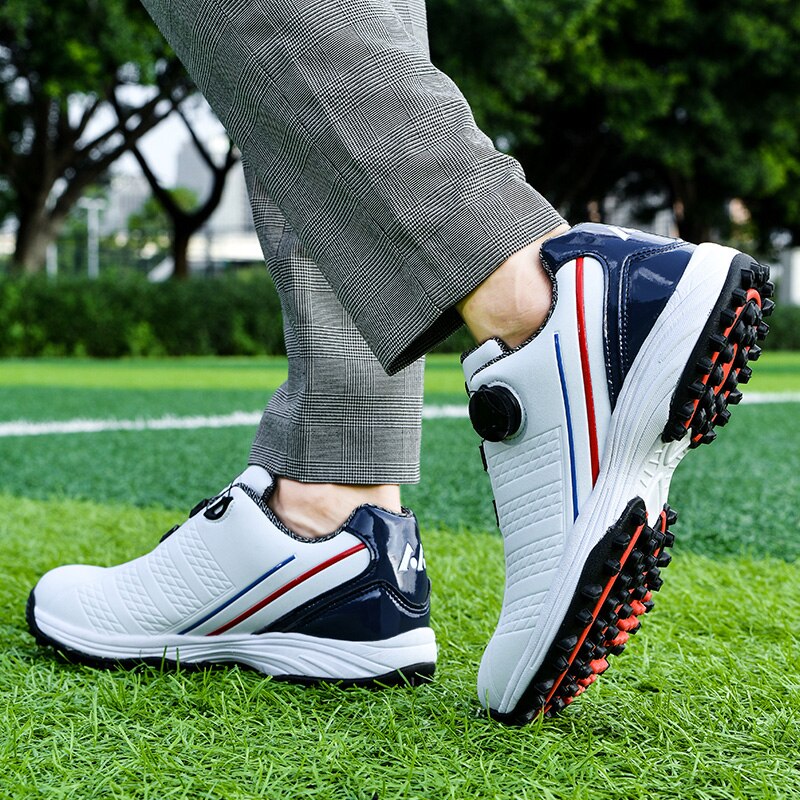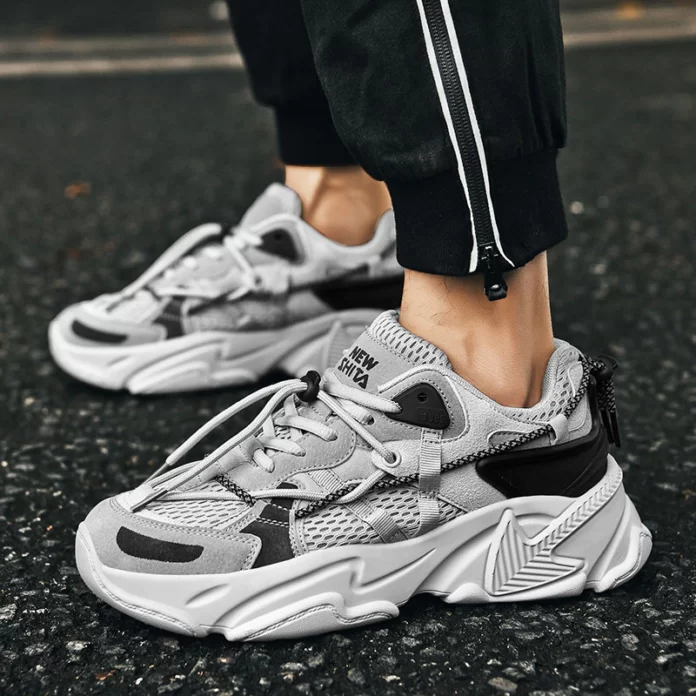Diabetic foot problems are one of the most common, and most dangerous, complications of diabetes. Women with diabetes can take an important step to protect their feet by investing in diabetic shoes. These special shoes provide comfort and support, help reduce the risk of injury, and reduce the chances of serious complications. This blog post will discuss why Diabetic Shoes For Women are so important and how to go about finding the right pair.
Understanding Diabetes And Foot Care
Living with diabetes requires careful management of various aspects of health, including foot care. Understanding the relationship between diabetes and foot problems is crucial for women with diabetes to prevent complications. Diabetes can lead to poor blood circulation and nerve damage in the feet, increasing the risk of developing foot problems. High blood sugar levels can damage blood vessels and impair the body’s ability to heal wounds.
Nerve damage, known as peripheral neuropathy, can result in reduced sensation in the feet, making it difficult to detect injuries or infections. To maintain healthy feet, women with diabetes should prioritize regular foot inspections and proper hygiene. Washing and thoroughly drying the feet daily can help prevent infections. Wearing properly fitting shoes and avoiding walking barefoot are essential habits to adopt.
Diabetic shoes play a vital role in foot care for women with diabetes. These specially designed shoes provide extra support and cushioning, reducing the risk of developing foot ulcers and other complications. They are typically wider and deeper to accommodate potential swelling and to prevent rubbing and pressure points. Some diabetic shoes also feature removable insoles to allow for custom orthotic inserts.
Why Diabetic Shoes Are Necessary
Diabetic shoes are not just a luxury for women with diabetes, but a necessity. The importance of diabetic shoes cannot be stressed enough when it comes to maintaining foot health and preventing complications. These specially designed shoes are necessary because they provide essential support and protection for women with diabetes.
- One of the primary reasons why diabetic shoes are necessary is their ability to reduce the risk of foot ulcers. Diabetes can lead to poor blood circulation and nerve damage, making it more difficult for wounds to heal. The extra cushioning and support of diabetic shoes help prevent excessive pressure on the feet, reducing the risk of developing ulcers.
- Diabetic shoes are also necessary to reduce the chances of infection. High blood sugar levels can weaken the immune system, making it harder for the body to fight off infections. The wide and deep design of diabetic shoes helps accommodate potential swelling and reduces rubbing and pressure, minimizing the risk of skin damage and infection.
- Additionally, diabetic shoes are necessary to promote overall foot comfort and mobility. They are designed to provide extra room for the toes, preventing crowding and discomfort. The cushioned insoles offer added comfort and shock absorption, allowing for better mobility and reducing the risk of falls or injuries.
Benefits Of Diabetic Shoes For Women With Diabetes
Diabetic shoes offer a multitude of benefits for women with diabetes. One of the key benefits is their ability to provide comfort and support, which is essential for individuals dealing with foot problems associated with diabetes. These shoes are designed to provide extra cushioning and shock absorption, alleviating pressure on the feet and reducing the risk of developing ulcers.
The wide and deep design of Diabetic Shoes For Women also accommodates potential swelling and prevents rubbing and pressure points, making them more comfortable to wear throughout the day. Furthermore, diabetic shoes promote better circulation and reduce the chances of infection. By improving blood flow to the feet, these shoes help minimize the risk of foot complications. They also feature materials that wick away moisture, keeping the feet dry and reducing the likelihood of fungal infections.
Diabetic shoes are not only beneficial for foot health but also for overall mobility. The roomier toe boxes prevent crowding and allow the toes to move freely. This added mobility reduces the risk of falls and injuries, giving women with diabetes greater confidence in their daily activities. Investing in diabetic shoes is a crucial step in maintaining foot health for women with diabetes.
Types Of Diabetic Shoes Available For Women
When it comes to choosing diabetic shoes, there are a variety of options available for women. One type of diabetic shoe is the orthopaedic shoe, which is designed to provide support and reduce pressure on the feet. These shoes often have a wider and deeper toe box to accommodate potential swelling and prevent rubbing.
Another type of diabetic shoe is the diabetic walking shoe, which is designed for everyday use and provides comfort and stability. These shoes often have cushioned insoles and shock absorption to alleviate pressure on the feet. For those who prefer a more casual option, diabetic sandals are also available. These sandals offer the same support and cushioning as diabetic shoes but with a more open design.
Regardless of the type of diabetic shoe chosen, it’s important to ensure that it fits properly and provides the necessary support and comfort for daily wear. Taking the time to find the right diabetic shoe can make a world of difference in maintaining foot health and reducing the risk of complications.
 Features To Look For When Choosing Diabetic Shoes
Features To Look For When Choosing Diabetic Shoes
When choosing diabetic shoes, there are several important features to consider. First and foremost, the shoes should have a wide and deep toe box to accommodate potential swelling and prevent rubbing and pressure points. This ensures that there is enough room for the toes to move freely without being cramped or compressed.
Additionally, the shoes should have a removable insole to allow for the insertion of custom orthotic inserts if needed. This provides additional support and cushioning, tailored to the individual’s specific needs. Another important feature to look for is a supportive and stable sole. The shoes should have a firm sole that provides good traction and helps with balance and stability while walking.
Furthermore, it’s crucial to choose diabetic shoes made from breathable materials. This helps to keep the feet cool and dry, preventing the buildup of moisture that can lead to fungal infections. Lastly, adjustable closures such as laces, straps, or Velcro are advantageous as they allow for a customized fit that can accommodate any swelling or changes in foot size throughout the day.
How To Get Fitted For Diabetic Shoes
Finding the right diabetic shoes is crucial for women with diabetes to ensure optimal comfort and support. The first step in getting fitted for diabetic shoes is to consult with a healthcare professional. They will assess your foot health and recommend the appropriate type of shoe for your specific needs. Next, you will need to find a reputable store or online retailer that specializes in diabetic shoes.
Make sure they have a wide range of sizes and styles available, as well as knowledgeable staff who can assist you in finding the perfect fit. When trying on diabetic shoes, it’s important to wear the socks that you normally wear, as this will affect the fit. Walk around in the shoes to test their comfort and make sure they don’t rub or pinch anywhere. Remember, diabetic shoes should have a wide and deep toe box, adjustable closures, and a supportive sole.
If you have specific foot issues or require orthotic inserts, discuss these with the healthcare professional or shoe retailer. They can help you find diabetic shoes that accommodate these needs. Getting fitted for diabetic shoes may take some time and patience, but it’s well worth it to ensure that you have the right shoes to protect your feet and prevent complications.
Tips For Caring For Your Diabetic Shoes
Taking proper care of your diabetic shoes is essential to ensure their longevity and effectiveness in protecting your feet. Here are some tips to help you care for your diabetic shoes:
- Clean and dry your shoes regularly: Regularly clean your shoes with a mild soap and water solution. Avoid soaking them, as excessive moisture can damage the materials. After cleaning, allow them to air dry completely before wearing them again.
- Avoid extreme temperatures: Diabetic shoes should be kept away from extreme heat or cold, as these can affect their shape and structure. Store them in a cool, dry place to maintain their integrity.
- Replace worn-out insoles: If your shoes have removable insoles, check them regularly for signs of wear and tear. Replace them as needed to ensure optimal support and cushioning.
- Avoid wearing your diabetic shoes for activities they are not designed for While diabetic shoes are designed to provide support and protection, they may not be suitable for certain activities like running or sports. Avoid wearing them for activities that may put excessive strain on the shoes.
- Keep an eye on the wear and tear of your shoes: Regularly inspect your diabetic shoes for any signs of damage or deterioration. If you notice any tears, loose stitching, or other issues, it may be time to consider getting a new pair.
Remember, proper care and maintenance of your diabetic shoes will help ensure their effectiveness in preventing complications and keeping your feet healthy.
FAQs
1. Do I need a prescription to get diabetic shoes?
No, you do not need a prescription to purchase diabetic shoes. However, it is recommended to consult with your healthcare professional to assess your foot health and determine the type of shoe that would be best for you.
2. Are diabetic shoes covered by insurance?
In some cases, diabetic shoes may be covered by insurance. Medicare and many private insurance plans often provide coverage for diabetic shoes if certain criteria are met. It is important to check with your insurance provider to understand your coverage options.
3. Can I wear regular shoes instead of diabetic shoes?
Regular shoes may not provide the same level of support and protection as diabetic shoes. The design of diabetic shoes specifically caters to the unique needs of individuals with diabetes, such as reducing pressure on the feet and accommodating potential swelling. It is highly recommended to invest in diabetic shoes to ensure optimal foot health.
4. Can I wear diabetic shoes if I don’t have diabetes?
While diabetic shoes are specifically designed for individuals with diabetes, anyone can wear them. Diabetic shoes offer comfort, support, and protection for the feet, making them suitable for individuals with various foot conditions or those who prioritize foot health.
5. How often should I replace my diabetic shoes?
The lifespan of diabetic shoes varies depending on factors such as usage, wear, and tear. It is generally recommended to replace diabetic shoes every 6-12 months or as soon as they start showing signs of wear. Regularly inspect your shoes for any damage and consult with your healthcare professional or shoe retailer for guidance on when to replace them.
Conclusion
Investing in diabetic shoes is crucial for women with diabetes to protect their feet and maintain optimal foot health. These specialized shoes offer comfort, support, and protection, reducing the risk of foot complications and improving overall quality of life. By understanding the relationship between diabetes and foot problems, women with diabetes can control their foot care and prioritize regular foot inspections and proper hygiene. Women with diabetes can benefit greatly from diabetic shoes. These shoes reduce the risk of foot ulcers, promote better circulation, and minimize the chances of infection.
| Other Good Articles to Read |
| niche blogs connect |
| blogs 97 |
| blog stitution |
| blogs unplugged |
| blogs cotchrouge |
| blog signatr |
| blog sintonias |
| blog zilla |
| consumer forums |
| finance forums |
| g blogs |
| too blog |



